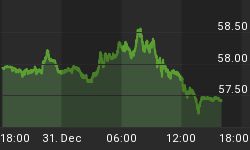Regardless of the spiteful attempts of the Democrats and a corrupt media, the US economy is not going to sink into a depression. (When in 2000 Cheney observed, correctly, that the economy was in recession he was accused by the same corrupt media and the Democrats of trying "to talk down the economy"). Some economic commentators have stressed that based on a year-over-year basis GDP rose by 2.5 per cent in the first quarter of this year, most of itdue the country's export boom.
That exports are booming is due to the dollar's fall against the currencies of its trading partners. The error with respect to exports is the old one of confusing GDP with economic growth. The expansion of exports means that more production is being directed to foreign markets. However, growth is capital accumulation -- not exports. If a country is not accumulatingcapital it is not growing, no matter how much it exports.
Then we have the economic commentariat once again focusing on consumption as the cause of growth, not realizing that stimulating consumption can drag an economy down. Some readers are still puzzled by this claim. In their opinion this view not only runs against common sense but also againstthe current economic orthodoxy.
Before going any further allow me to stress what every economist is supposed to know: economic growth is forgone consumption. This means that investment, spending on capital goods, can only take place by directing resources away from current consumption. It therefore follows that the reverse is true. Increasing consumption at the expense of savings results in resources beingredirected from investment and hence future consumption.
To avoid confusion I must elaborate further. Increased investment expands the production structure which raises real wages and increases future consumption. Hidden within this statement is the concept of balance between savings (investment) and consumption. This concept should never be lost sight of. So long as the balance is maintained living standards will continue torise. Credit expansion disturbs the balance and generates the business cycle.
What matters for any economy is not consumer spending but total spending, particularly between the stages of production. But even this, as the concept of balance states, is not enough. So long as the amount spent on investment corresponds to the country's real savings ratio balance is maintained. The problem starts when monetary policy throws this balance out of kilter. Should monetary policy result in rising consumption the effect will be to create a profits squeeze in the higher stages of production causing manufacturingto contract.
As Hayek put it in the The 'Paradox' of Saving (1929), higher stages become unprofitable "not because the demand for consumption goods is too small, but on the contrary because it is too large and too urgent to render the execution of lengthy roundabout processes profitable". In fact, even if savings were increased their beneficial effects could be more thancancelled out by an increased demand for consumer goods.
What this amounts to is that a rise in demand for consumption goods relative to producer goods causes much of manufacturing to contract. One should be able to easily see this if one thinks in terms of relative prices, which economists do -- until it comes to investment and consumption spending. Raising the demand for consumption goods relative to producer goods causes non-specific factors to shift to the lower stages of production, those closeto the consumption stage.
Now these factors, like all factors, are complementary, meaning that they have to be used in cooperation with other factors. Shifting non-specific factors from one line of production to another therefore sees the abandonment of specific factors, factors that only have one function. This can cause productivity to fall and excess capacity to emerge when the shift is towards consumption. Even though employment would fall in manufacturing the employment level could still be kept comparatively steady by the increased demand for labour in thelower stages of production.
As this process gets underway labour costs in the economy rise even as manufacturing employment falls. This is the final stage of the boom. Now the final stage was so well documented in the nineteenth century that Marx used the phenomenon in his attack on under-consumptionists, those who argued that increased consumer spending would avert depression. Economics has now advanced (I should say retreated) to the stage that arguments that were rightly rejected by the classical economists, of whom Marx was one, are now unthinkingly treated as a fundamental economic truth, especially by mediacommentators.
The effect therefore of policies that direct economic activity to increased consumption at the expense of production is to reduce the pool of savings which in turn causes the production structure to shrink. The long term consequences for living standards if such trends continued should be self-evident. We are left with the conclusion that encouraging consumption will deepen any depression and prolong its duration. Every mainstream Australian economist would vigorously deny this proposition. Funnily enough none of them appearprepared to defend their opinions.
















